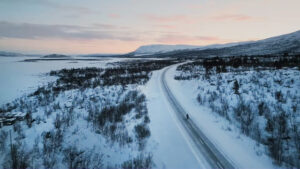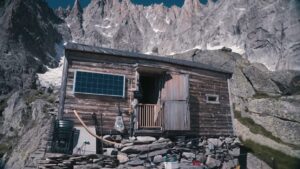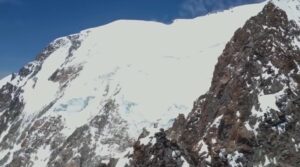Arctic Alchemy, a short film from directors Colin Arisman and Zeppelin Zeerip, follows adventurer and climate scientist Roman Dial on an expedition into the Arctic.
Dial, now in his 60s, has been going into the Alaskan wilderness since he was a teenager. He has decades of experience climbing, mountain biking, packrafting, and hiking. In interview and voiceover, Dial explains how a love for the outdoors became a need to chase more grueling and dangerous challenges.
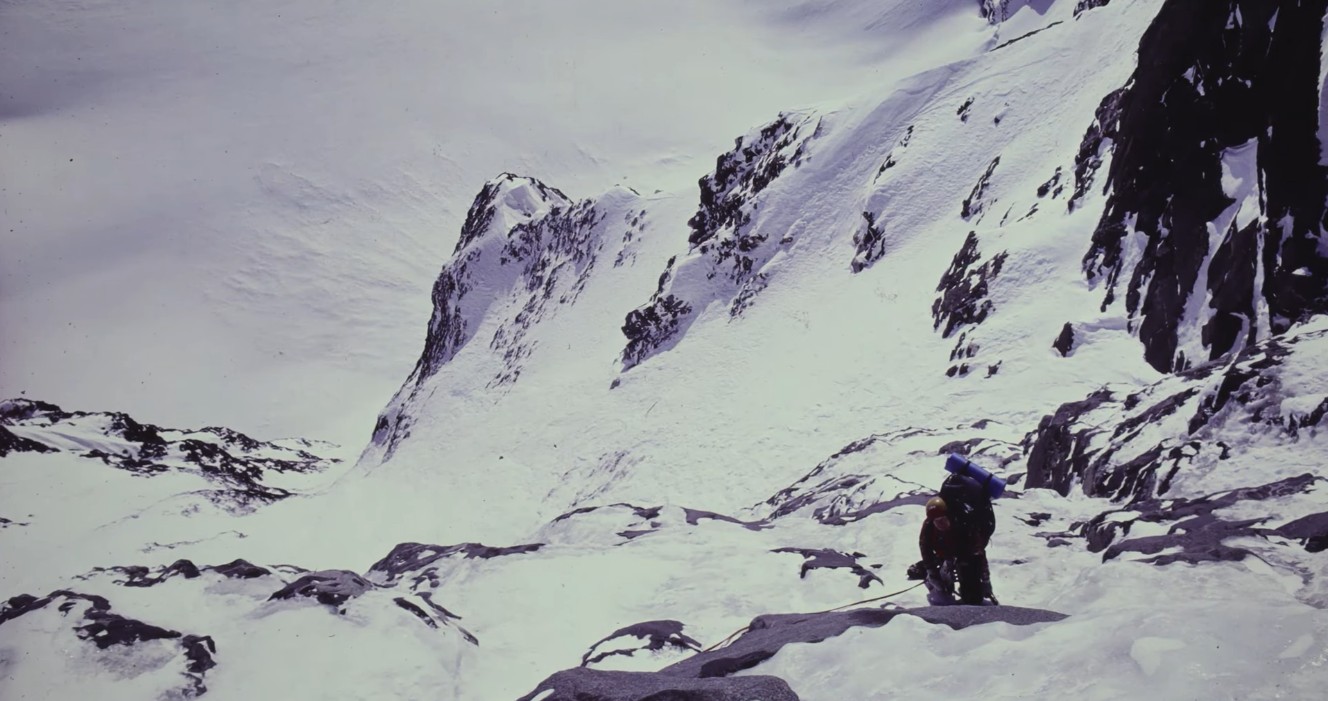
Dial tackles McGinnis Peak in the Alaska Range, in 1985. Photo: Screenshot
After a brush with death on an Alaskan peak, however, Dial changed. He realized, he explains, that he wanted to grow old and raise a family. He settled down with his wife Peggy, and when they had a son, named Cody, Dial went back to school. Dial got his PhD and became a science professor.
It is his research that brings him into the mountains now. We’re following him on a rafting trip into the Brooks Range, where he and his team are sampling the pH levels of streams. The Arctic rivers, which should be pristine, are rusting from metal contaminants. By sampling them right at their source and following the water down, Dial and his team hope to shed light on this strange and worrying phenomenon.

Dial and his team paddle upriver, sampling as they go. Photo: Screenshot
Paddling a poisoned river
Most field science in Alaska, Dial’s colleague and friend Brad Meiklejohn explains, is done by helicopter. The work is so remote, the land is so vast and sparsely populated — but helicopters are expensive. By using his adventuring skills, Dial can get good results on a slim budget.
The scientific results are good, but the news isn’t. As they delve deeper into the water’s headlands, they find bilious, yellow water that leaves dark red stains on the rocks.
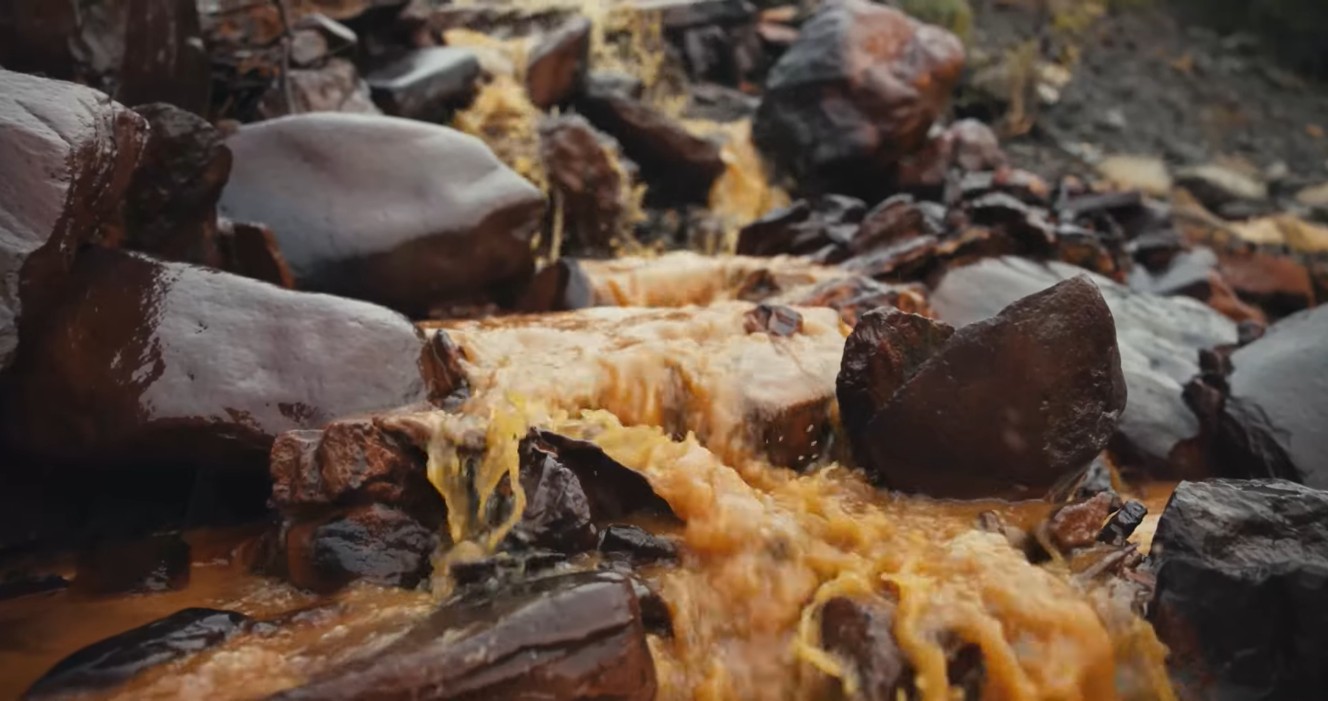
The phenomenon colors the water and stains the rocks. Photo: Screenshot
As anthropogenic climate change warms the Arctic, permafrost melts, exposing rock that hasn’t touched water in millennia. When it does come into contact with water, the resulting chemical reaction produces acid and releases metals previously contained in the rock. Then the rivers bring the acid and metal downstream into the water table.
There are Alaskan native communities downstream whose survival relies on these waterways. The damage is not slow and long-term. The Brooks Range is changing quickly, and the effects are already being felt. For himself and Dial, Meiklejohn says, there is a real grief that comes with this.
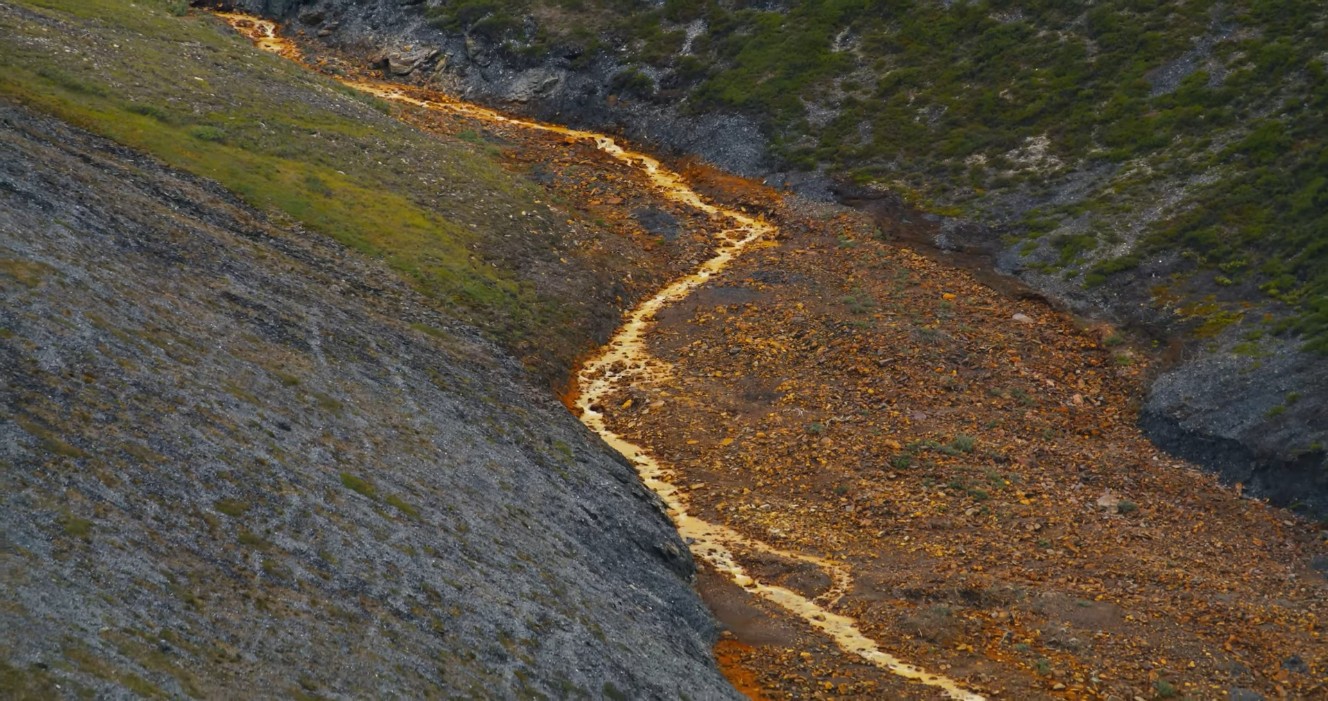
It looks strangely alluring, this golden ribbon snaking its way through the landscape, but it spells devastation. Photo: Screenshot
Moving through wild country
As the expedition moves forward, Dial reflects on his experience with fatherhood. He raised Cody to love nature, taking him hiking, rafting, and camping from a young age.
In July of 2014, Cody was in Costa Rica, traveling on his own during some time off from school. He emailed his father that he was entering the park — and then no one heard anything else. Roman Dial rushed to Costa Rica to search for himself, despite authorities telling him to stay out.

Roman had taken his son to Costa Rica when he was a child. At age 27, Cody disappeared there. Photo: Screenshot
The search lasted for weeks, then months, and ultimately extended over a year. It was only two years after he’d entered the jungle that Cody’s remains were found and retrieved. For his father, the grief was intense. Through fostering and encouraging his son’s love of nature, Roman wondered, had he inadvertently contributed to his death?
And yet, Dial still finds comfort and escape in nature. He’s transformed his loss, Meiklejohn believes, into his work preserving “their favorite place.”
As for the Brooks Range, Roman Dial’s work has advanced scientific understanding of how climate change is affecting it. His protegés, like Russel Wong, who was also on the expedition, will continue his research and advocacy against threats like the proposed Ambler Industrial Road.

